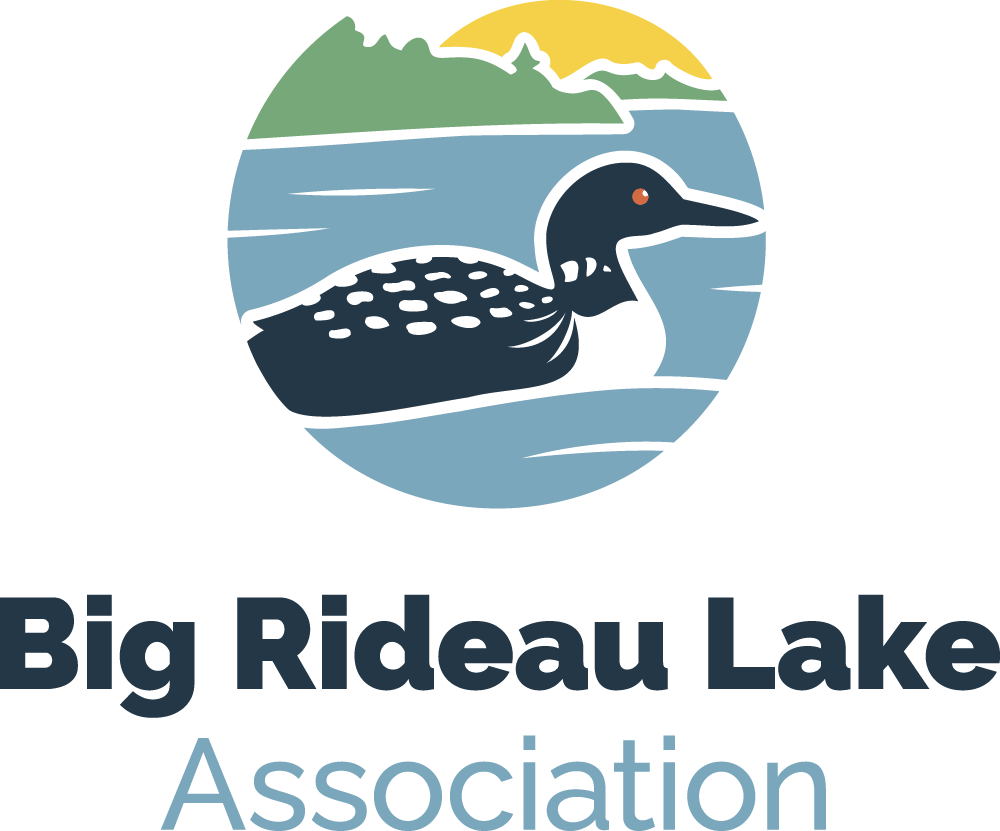The "Ups and Downs" of the Lake: Understanding Water Levels
Prepared by: Brian Hawkins, BRLA President
Water level management for the Rideau River watershed is the responsibility of Parks Canada, whose mandate it is to maintain “navigable water levels” throughout the canal system. These responsibilities are managed from the Smiths Falls Rideau Canal Office.
Big Rideau Lake, including Lower Rideau and Adam Lakes, is the largest lake (often referred to as “the Lake” or “the Big Lake” by Rideau Canal staff) in the Rideau River watershed. Water elevations are the same in all three lakes, barring wind, and are managed by dam operations at the Poonamalie Lock Station.
The drainage area in to “the Big Lake” is huge, approximately 1,290 sq.km, as outlined in red on this map. Roughly 60 per cent of this drainage area is carried through the Tay River (i.e. most of the inflow to the lake comes from the Tay River)
“The Big Lake” is an integral part of the Rideau Canal for two reasons:
- It forms part of the navigation waterway;
- It supplements water flows in the Rideau River to maintain the navigable water levels in the canal below, flowing towards the Ottawa River.
Water discharged through Poonamalie also provides environmental and recreational benefits, municipal water supply, wastewater treatment and power for hydro generation. With regards to hydro generation, Poonamalie outflows are never increased to keep downstream hydroelectric plants producing energy. Under low flow conditions it is not uncommon for the hydro plants to be shut down due to lack of water.
The bulk of the flow in the Rideau River during dry years comes from “the Big Lake” and Bobs Lake. Without drawing down these two large lakes, the Rideau Canal would not be a navigable waterway. And without the requirement to “feed” the Rideau Canal, these two large lakes would have substantially lower water levels and would therefore look entirely different than they do today.
Try to imagine “the Big Lake’s” waterfronts if water levels were held only by the sill of the dam at Poonamalie, which is 1.3 m (a little more than four feet) lower than the target mid-October water level. Year round lake levels would be some four feet lower than current late season!
The management of “the Big Lake” water levels follows an annual cycle:
· Fall – water levels reach their lowest point by mid-October, usually 123.1 meters above sea level +/-. This timing is critical to protect the Lake Trout spawn, which could be left high and dry if water levels are dropped substantially after mid-October.
· Winter – water levels remain low and snow surveys are taken to assist in determining the target water level before the spring freshet (overflow caused by heavy rains or melted snow). Water may be released from Poonamalie during this time, depending on the snowfall and/or the need to assist the ice flush in Ottawa.
· Spring - water levels increase due to snow melt and rain. Operationally, Parks Canada always wants to have the lake full heading into the navigation season. Some downstream flood mitigation can be provided by withholding or slowing the release of water, which can be done because of the lake’s huge storage capacity. That in turn can lead to “higher than expected” spring water levels as cottages are being opened.
· Summer - water levels slowly decrease as water is released downstream to maintain navigable conditions, with occasional increases after significant rain events.
This cycle is captured by the graph shown below, which is produced by the Rideau Valley Conservation Authority. It shows actual daily water levels compared to historical and targeted levels, for a twelve month period starting October 31st, 2015. You can download this interactive graph and customize the dates by following this link:
http://his.rvca.ca/rvcafwl/isg/StandardGraph_Big_Rideau_Lake_Level.html
Thanks to Colin Clarke, Water Management Technician, Ontario Waterways Unit, Parks Canada for his valuable input in preparing this article.
This article, like all of the How the Lake Works series, is presented in a blog format. We welcome and encourage your comments - if you would like to engage in the discussion, please post your comments below.


![FINAL BRLA HOWtheLAKEworks[FINALARTWORK]-01.png](https://images.squarespace-cdn.com/content/v1/5609ac7ae4b0659a7fa58630/1521919100207-DCDCWQAZUIW7G3R7DWXJ/FINAL+BRLA+HOWtheLAKEworks%5BFINALARTWORK%5D-01.png)

